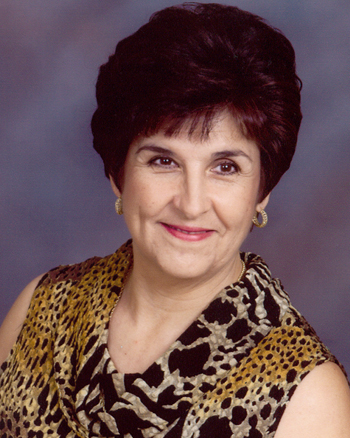This article first appeared in the winter 2020 issue of GIA Quarterly magazine.
THE BAPTISM OF THE LORD, generally celebrated on Sunday, concludes the Christmas Season. It also is the first Sunday of Ordinary Time, since the following Sunday is numbered the second Sunday.
The “Universal Norms on the Liturgical Year and the General Roman Calendar” sheds light on this part of the liturgical year. In the Christmas Time section, it states: “The Sunday falling after 6 January is the Feast of the Baptism of the Lord” (38).
A few articles later, under the Ordinary Time section, it states: “Ordinary Time begins on the Monday which follows the Sunday occurring after 6 January and extends up to and including the Tuesday before the beginning of Lent” (44). In 2021, this winter Ordinary Time will be shorter, only five Sundays (the second through the sixth), since Ash Wednesday falls on February 17. The Gospel from Cycle B according to Mark will be proclaimed.
Keep in mind that Ordinary Time refers to a time of year when Sundays are counted ordinally; that is, in the order in which they occur: first, second, third, and so on. The Universal Norms say this about the nature of Ordinary Time: “Besides the times of year that have their own distinctive character, there remain in the yearly cycle thirty-three or thirty-four weeks in which no particular aspect of the mystery of Christ is celebrated, but rather the mystery of Christ itself is honored in its fullness, especially on Sundays” (43). On two of these Sundays, Jesus begins to call his disciples—the beginning of his public mission. On three of these Sundays, we hear stories of healing and of Jesus’s authority and power.
Principal themes for the season
Here are some of the principal themes and headings from the topic index of the Oramos Cantando/We Pray in Song hymnal that might be helpful for each Gospel:
2nd: Jesus called the Lamb of God; Jesus inviting to “come and see”; abiding with the Lord; finding the Messiah; Simon receives a new name from Jesus—Peter! Index: Buscar/Seeking; Mesiánico/Messianic; Ministerio/Ministry; Discipulado/Discipleship.
3rd: Jesus proclaims, “This is the time of fulfillment. The reign of God is at hand! Reform your lives and believe in the good news!” (a precursor to what we hear on Ash Wednesday). Jesus continues to call his apostles, this time Simon and Andrew, fishermen, who come immediately. He also calls James and John. Index: Arrepentimiento/Repentance; Discipulado/Discipleship; Invitación/Invitation; Ley/Law; Juicio/Judgment.
4th: Jesus teaches with authority in the synagogue; Jesus confronts the unclean spirit in a man, and the unclean spirit obeys his command. (First reading: Moses speaks of a prophet to come who will speak with the words of the Lord, and the people will listen; psalm: If today, you hear his voice, harden not your hearts). Index: Sanación/Healing; Jesucristo/Jesus Christ; Palabra de Dios/Word of God; Conversión/Conversion.
5th: Jesus cures Simon’s mother-in-law; all who were ill were brought to him; he expelled many demons; Jesus came to proclaim the good news, cure the sick, expel demons. (First reading: Job laments the sad state of his life of misery; psalm: Praise the Lord who heals the brokenhearted). Index: Healing/Sanación; Freedom/Libertad; Community/Comunidad; Mercy/Misericor- dia; Petition, Prayer/Súplica, Oración; Comfort/Con- suelo; Suffering/Sufrimiento; Pastoral Care of the Sick/ Cuidado Pastoral de los Enfermos (Liturgical Index).
6th: Jesus cures a leper who requests healing; people keep coming to Jesus from all sides upon hearing of his ability to heal the sick. (First reading: lepers are brought to Aaron for healing, yet shall remain apart, outside the camp, declaring “unclean”). Index: Healing/ Sanación; Community/Comunidad; Mercy/Misericor- dia; Comfort/Consuelo; Suffering/Sufrimiento; Pastoral Care of the Sick/Cuidado Pastoral de los Enfermos.
Making a “short list” of hymns
Remember that the indexes of the GIA hymnals are very helpful for planning and cross-reference. Look first under these headings for each week. Make a short list of the hymns that best support the Gospel and the specific image from the Gospel that you want to emphasize. What a great way to offer your pastor some homiletic ideas—images from hymns and songs!
Looking then at the music available in the hymnal that might support the Scriptures on these Sundays, I would suggest the following:
2nd: “Quién Es Ese”/“Who Is This”; “The Sum- mons”/“El Llamado”; “Vengan Todos al Banquete”/“Come, Join the Feasting”; “Come and Follow Me”/“Ven y Sígueme”; “This Is the Time of Fulfillment”/“¡Se Ha Cumplido El Tiempo!”; “You Walk along Our Shoreline”/“Caminas por la Orilla”; “Te Damos Gracias”/“O Lord, I Offer”; “Quiero Decirte Que Sí”/“Gladly I Say Yes to You”; “Amarte Sólo a Ti, Señor”/“To Love You, Lord”
3rd: “¿A Quién Iremos?”/“To Whom, O Lord, Shall We Go?”; “Two Fishermen”/“Dos Pescadores”; “The Master Came to Bring Good News”/“Vino el Maestro Para Dar”; “Parce Domine”; “Spare Us, Gra- cious Lord”/“Ten Piedad, Señor”; “Pescador”; “Pescador de Hombres”/“Lord, When You Came”
4th: “He Healed the Darkness of My Mind”/“Quitó la Oscuridad en Mí”; “Allí Está Jesús”/“Look Closely and See”; “Healer of Our Every Ill”/“Sanador de Todo Mal”; “Forgive Our Sins”/“Nos Enseñaste a Perdonar”; “Remember Your Love”/“Recuerda Tu Amor”
5th: “Open My Eyes”/“Abre Mis Ojos”; “There’s a Wideness in God’s Mercy”/“Hay Anchira en Su Clem- encia”; “Praise to You, O Christ, Our Savior”/“Te Ala- bamos Jesucristo”; “Yes, I Shall Arise”/“Sí, Me Levan- taré”; “Lord, You Give the Great Commission”/“Cristo, Tú Nos Has Mandado”
6th: “¿A Quién Iremos?”/“To Whom, O Lord, Shall We Go?”; “Eran Cien Ovejas”/“Once a Loving Shepherd”; “Healer of Our Every Ill”/“Sanador de Todo Mal”; “Out of the Depths”/“De Lo Profundo”
Since the fourth, fifth, and sixth Sundays are about Jesus healing the sick and the possessed, song suggestions made above are pretty much interchangeable. In planning music from Sunday to Sunday, some repetition is desirable as it allows the assembly to become familiar with the songs and hymns. Also, given the short list of suggestions above, the planner must decide the appropriateness of a particular song or hymn for a particular moment in the Mass. Some are better suited as opening or closing hymns, others for the preparation of gifts.

Dolores Martinez
Dolores Martinez is a consultant and formator in liturgy and music, and she also serves parishes as a music minister. She is an adjunct professor at the Mexican American Catholic College in San Antonio, Texas.


Recent Comments